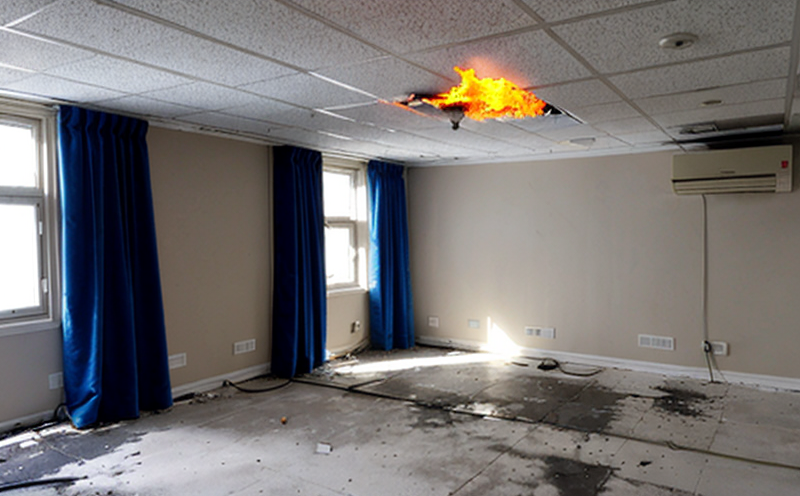Verifying that materials used in high-risk areas, such as public buildings, comply with fire safety regulations
Verifying Fire Safety Regulations A Critical Component of Public Building Compliance
As a responsible business owner or facilities manager, ensuring the safety and well-being of occupants in public buildings is a top priority. With an increasing focus on fire safety regulations, its essential to verify that materials used in high-risk areas comply with these standards. This is where Eurolab comes in our expert laboratory services provide comprehensive testing and verification to ensure your building meets the required fire safety standards.
The Importance of Fire Safety Regulations
Fire safety regulations are designed to protect lives and prevent property damage in public buildings, such as offices, schools, hospitals, and shopping centers. Non-compliance can result in severe consequences, including
Loss of life or injury
Property damage or destruction
Significant financial losses due to fines and penalties
Damage to reputation and brand
The Advantages of Verifying Materials with Eurolab
Our laboratory services offer a range of benefits for businesses seeking to ensure fire safety regulations are met
Compliance with regulatory requirements Our testing and verification process ensures that materials used in high-risk areas meet or exceed the required standards, minimizing the risk of non-compliance.
Reduced risk of fire incidents By verifying materials meet fire safety regulations, you can reduce the likelihood of fire-related accidents and associated risks.
Protection of occupants and assets Our services help safeguard lives and prevent property damage, protecting your businesss reputation and financial well-being.
Cost savings Avoiding costly fines, penalties, and repairs associated with non-compliance ensures that your budget is allocated effectively.
Enhanced brand reputation Demonstrating a commitment to fire safety regulations can enhance your businesss reputation and appeal to customers seeking safe and responsible practices.
Increased confidence in fire safety measures Our expert testing and verification provide peace of mind, allowing you to focus on core operations while knowing that your building meets the required standards.
How Does Eurolab Verify Materials?
Our laboratory services involve a thorough evaluation process
Material sampling We collect samples from high-risk areas, such as walls, ceilings, or flooring.
Testing and analysis Our experienced technicians conduct comprehensive testing and analysis to determine the materials fire safety properties.
Comparison with regulatory standards We compare the test results against relevant fire safety regulations to ensure compliance.
Frequently Asked Questions
Q What types of materials are subject to verification?
A Materials used in high-risk areas, such as walls, ceilings, flooring, and insulation, may be subject to verification.
Q How often should I verify materials?
A Regular testing and verification (e.g., every 5-10 years) is recommended to ensure ongoing compliance with fire safety regulations.
Q What happens if my building fails a material test?
A If your building fails a material test, we will provide recommendations for remediation or replacement of non-compliant materials.
Conclusion
Verifying that materials used in high-risk areas comply with fire safety regulations is an essential component of public building compliance. Eurolabs expert laboratory services ensure that your business meets the required standards, reducing risks and protecting occupants and assets. Dont compromise on fire safety trust Eurolab to verify the materials used in your public building today.
-
Testing the rate at which flames spread across the surface of materials used in construction
-
Simulating fire scenarios to evaluate how quickly fire can spread on different building materials
-
Ensuring that materials meet fire safety standards by controlling the spread of flames in case of fire
-
Verifying that fire-resistant materials slow down the propagation of flames to minimize damage
-
Testing the flame spread rate of materials like insulation, carpeting, and coatings to ensure they do not contribute to rapid fire escalation
-
Simulating fire conditions that could lead to the ignition of building materials and assessing their flame spread characteristics
-
Assessing the impact of surface finish, texture, and composition on the flame spread index of materials
-
Evaluating the behavior of materials under fire conditions to ensure they do not release toxic fumes or gases
-
Testing materials for their ability to withstand fire without contributing to the spread of flames across walls, ceilings, and floors
-
Simulating various fire intensities and measuring how long it takes for flames to spread across different construction materials
-
Testing the flame spread index of materials used in high-rise buildings, residential units, and industrial facilities
-
Evaluating how the thickness and density of materials influence their flame spread index
-
Testing materials used in fire doors, windows, and other safety features for their ability to resist flame spread
-
Simulating fire conditions in various environments to assess material performance under diverse fire scenarios
-
Verifying that materials such as wood, concrete, and metal retain their integrity during a fire without aiding flame spread
-
Testing the use of flame-retardant treatments or coatings on construction materials to improve their flame spread performance
-
Ensuring that materials used in construction applications, including roofing and flooring, provide adequate flame resistance
-
Testing the effectiveness of flame barriers and fire-resistant coatings in slowing down the spread of flames
-
Verifying compliance with national and international fire safety standards for materials used in construction
-
Assessing the flame spread characteristics of materials used in industrial applications, such as manufacturing and warehouses
-
Simulating extreme fire conditions to test materials for their ability to stop or slow down flame spread effectively
-
Verifying that construction materials prevent the spread of fire across multiple building levels in multi-story structures




